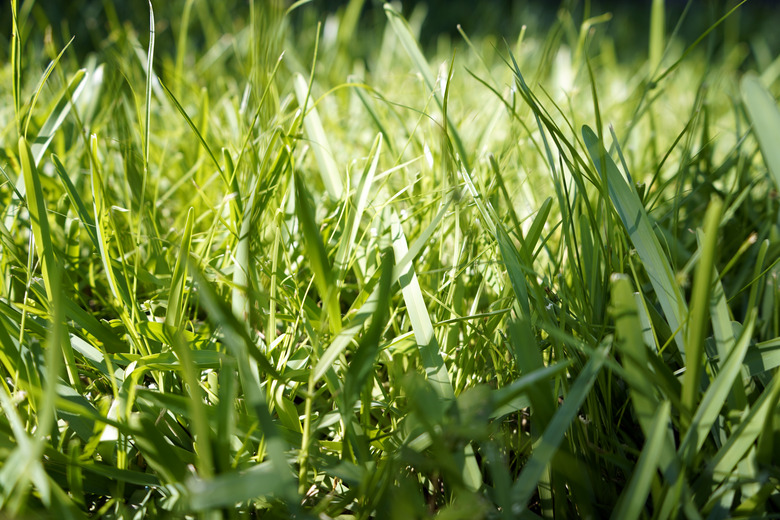How Do I Kill St. Augustine Grass?
Things Needed
- Fertilizer
- Gardening spray paint
- Herbicide
- Pump-up sprayer
- Shovel
Whether you are adding a new gardening bed, you are unhappy with the St. Augustine grass or have a lawn-remodeling project, sometimes you are required to kill the grass and remove it. The lifespan of St Augustine grass varies, according to soil, climate and cultural conditions, but it may be necessary to replace some St. Augustine lawns after 15 years, according to retired University of Georgia Cooperative Extension agent Walter Reeves.
St. Augustine (Stenotaphrum secandatum, USDA hardiness zones 8-10) is a warm-season grass predominately found growing in the warm coastal regions of the United States. This grass spreads aggressively by above ground stems or runners, called stolons, which grow up to 1 inch per day during the warm growing season. The University of Florida IFAS Extension notes that it's the stolons that cause the lateral growth of St. Augustine, giving this grass its aggressive spreading tendency. Gardeners wishing to eliminate the grass will have success, but it will take up to two weeks for the total eradication of the St. Augustine.
1. Stop Mowing St. Augustine
Suspend mowing the St. Augustine grass before you intend on killing it. The longer the grass blades, the more surface the herbicide has to stick.
2. Thoroughly Water St. Augustine
Water the area of St. Augustine grass thoroughly, for approximately two to three weeks before beginning the eradication process. The water will "plump" the grass blades up, allowing more surface area for the herbicide to work.
3. Fertilize to Promote Lush Growth
Apply lawn fertilizer to the St. Augustine to "plump" it up and get the grass in its healthiest form before beginning the process of killing it. This is not a requirement but allows more blade surface to develop, helping the herbicide work better.
4. Mark the Area
Mark the section of St. Augustine grass you desire to kill, if you will not be killing the entire area. Use a gardening spray paint and spray around the section of grass you wish to eliminate.
5. Suspend Watering the Grass
Turn off all water to the area of St. Augustine the day before you intend on beginning the process of killing it and keep it turned off. You do not want excess water on the grass that will wash the herbicide off the blades.
6. Killing Lawn with Glyphosate
Fill a pump-up sprayer with a non-selective grass and weed killer and mix, per the package instructions. Select a herbicide that does not affect the area's soil long-term, especially if you intend on replanting the area with more grass or other vegetation.
It's important to choose a product that truly contains a non-selective herbicide. For example, the Ohio State University notes that the Roundup brand also includes a product called "Roundup for Lawns," which is a selective herbicide that will not harm your lawn. However, the "Roundup" products that contain non-selective herbicides are effective for killing lawn with glyphosate, including St. Augustine.
In the past, using MSMA on St. Augustine to kill the grass was an option for homeowners; however, this highly toxic chemical herbicide is now only used in limited applications by certified pest-control professionals.
7. Apply the Herbicide
Apply the herbicide early in the morning of a sunny day when there are no winds. Spray the area of St. Augustine grass you are killing, fully saturating the leaf blades. Spraying early in the morning allows the product to fully dry on the grass blades and the sun will quicken the killing process.
8. Reapply the Herbicide
Repeat the application of herbicide in approximately three to four days, killing any St. Augustine that is hanging onto life. Do not water the area for approximately two weeks to allow the product to work. The grass should begin to turn brown and die. If green areas remain in the St. Augustine, repeat the application of herbicide to those areas.
9. Remove the Dead Grass
Remove the grass two weeks later when it has died and turned brown and no sign of green is left. Dig the grass from the ground being sure to remove the roots.
